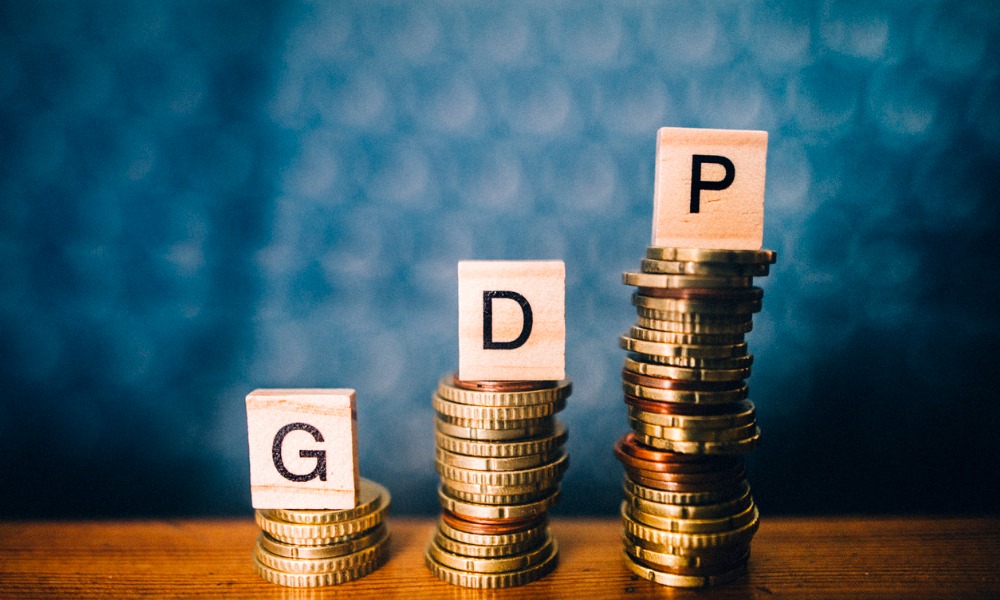Services, pipeline transportation, and finance sectors also contributed to the GDP increase in May

Statistics Canada reveals that real gross domestic product (GDP) grew by 0.2 percent in May, following a 0.3 percent increase in April.
The goods-producing industries contributed significantly to this growth, with a 0.4 percent rise as four out of five sectors expanded. Services-producing industries edged up by 0.1 percent, and overall, 15 of 20 sectors experienced growth in May.
The manufacturing sector led the growth in May with a 1.0 percent increase, marking its second consecutive month of expansion. This growth was the largest since January 2023, with both durable and non-durable manufacturing rising.
Non-durable goods manufacturing grew by 1.4 percent, the highest rate since November 2023, driven by a 7.3 percent rise in petroleum and coal product manufacturing. This subsector's growth offset a 5.0 percent decline in April, as refineries rebounded after maintenance.
Durable goods manufacturing expanded by 0.7 percent, with six of ten subsectors increasing. Notable contributors were the furniture and related products subsector, which grew by 4.6 percent, and miscellaneous manufacturing, which rose by 4.7 percent.
However, the transportation equipment manufacturing subsector declined by 0.4 percent due to retooling activities at an automotive assembly plant in Ontario.
The mining, quarrying, and oil and gas extraction sector contracted by 0.6 percent in May, partly offsetting a 2.1 percent increase in April. The oil and gas extraction subsector, which saw a 2.1 percent decline, drove this contraction after three consecutive months of growth.
Oil sands extraction dropped by 3.5 percent due to maintenance at upgrading facilities in northern Alberta, while oil and gas extraction, excluding oil sands, decreased by 0.6 percent as lower natural gas extraction outweighed an increase in crude petroleum extraction.
In contrast, mining, and quarrying (excluding oil and gas) rose by 0.5 percent, the seventh increase in eight months.
This growth was led by a 2.7 percent rise in non-metallic mineral mining and quarrying, with potash mining increasing by 7.1 percent as production recovered at a Saskatchewan mine that had a temporary shutdown in April.
Pipeline transportation increased by 0.6 percent in May, driven by a 1.5 percent rise in the crude oil and other pipeline transportation industry.
This growth reflects the commencement of the expanded Trans Mountain pipeline, with the first tankers carrying Western Canadian oil departing from the Port of Vancouver in late May. However, a 0.2 percent decline in the pipeline transportation of natural gas tempered the overall growth in this subsector.
The retail trade sector was the largest detractor from growth in May, contracting by 0.9 percent and offsetting the previous month's increase. Significant declines occurred in food and beverage stores (-2.3 percent), health and personal care stores (-1.4 percent), and general merchandise stores (-1.4 percent).
However, motor vehicle and parts dealers saw a 0.8 percent increase, reflecting improved activity at new and used car dealerships.
The wholesale trade sector also contracted by 0.8 percent in May, following a 1.4 percent increase in April. Motor vehicle and motor vehicle parts and accessories merchant wholesalers drove this decline with a 4.0 percent decrease, partially offsetting the 8.6 percent increase seen in April.
Additionally, machinery, equipment, and supplies wholesalers declined by 1.2 percent, and miscellaneous wholesalers fell by 1.7 percent.
Accommodation and food services grew for the second consecutive month, increasing by 0.9 percent in May. Food services and drinking places saw a 1.2 percent rise, the largest increase since January 2023.
The arts, entertainment, and recreation sector also grew by 0.3 percent, driven by performing arts, spectator sports, and related industries. High attendance at spectator sports, particularly from three Canadian National Hockey League teams playing in the playoffs, boosted this sector.
The finance and insurance sector grew for the second consecutive month, increasing by 0.2 percent in May.
This growth was mainly driven by the financial investment services, funds, and other financial vehicles subsector, which rose by 0.9 percent due to higher bond market activity and strong foreign investment in Canadian debt securities.
The public sector, including educational services, health care and social assistance, and public administration, increased for the fifth consecutive month, growing by 0.4 percent in May.
Public administration saw a 0.4 percent increase, driven by local, municipal, and regional public administration.
Educational services grew by 0.5 percent, led by elementary and secondary schools, which continued their growth following declines in November and December 2023 due to a public sector strike in Quebec.
Advance information indicates that real GDP increased by 0.1 percent in June 2024, with growth in construction, real estate and rental and leasing, and finance and insurance sectors. However, decreases in manufacturing and wholesale trade partially offset this growth.
This preliminary estimate suggests the economy expanded by 0.5 percent in the second quarter of 2024. The official estimate for the second quarter will be released on August 30, 2024, alongside the GDP by income and expenditure data.



